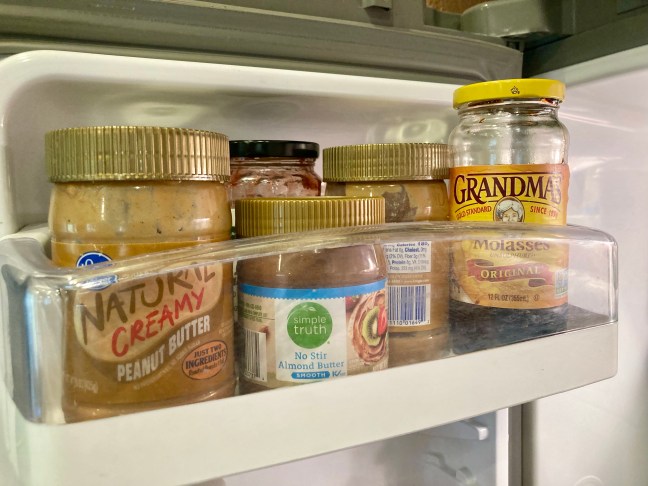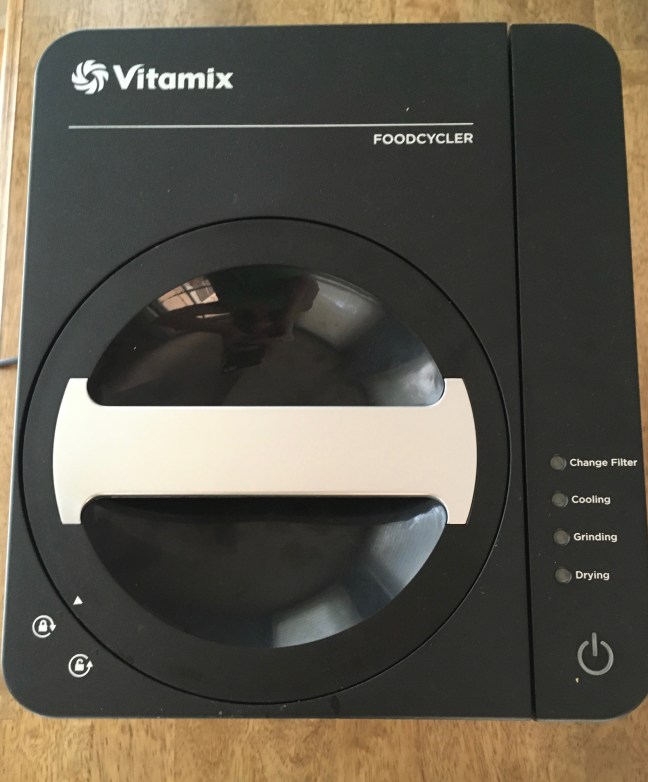What’s in a nutritionist’s kitchen? Consider this your backstage pass.

Have you ever wondered exactly what your dentist does for his teeth or what regimen your glowing aesthetician uses on her skin? I know I have. And before I became a nutritionist, I really wondered what people in this profession actually ate. Dietitians and nutritionists are supposed to be the ultimate healthy eating gurus, right? So what do they actually stock in their pantries and make their meals with?
Now that I’ve been licensed as a nutritionist for almost five years (my anniversary is coming up on April 1st!), the tables have turned a bit. I can tell you that when I grocery shop, I often notice what people put in their carts. And, just like some folks might get a thrill from snooping through other people’s medicine cabinets or private drawers, I’m always curious to see what foods people have in their home kitchens.
On the flip side, I totally get it when people are interested to know what my family eats in the everyday. I’ll DEFINITELY admit that my own home pantry, fridge, and freezer are far from perfect (both in terms of their contents and their organization). But in the interest of transparency–and hopefully in the interest of education on real-world healthy eating–I thought I’d share *exactly* what goes on behind closed pantry doors at my house.
Ready? Let’s start the VIP backstage pass tour of a nutritionist’s kitchen. (I feel like there’s a reality show premise in here somewhere.)

Pantry
About a year ago, we finished a kitchen remodel that gave us tons of extra space–everywhere except the pantry. Whereas we used to have a walk-in pantry closet with a real door, now our dry goods are housed in more traditional pantry cabinets with pull-out drawers. Here’s a look.
Canned Goods

If you ask me, canned goods are where mealtime magic happens. They add flavor, they’re cheap, and they last forever. I almost always have canned tuna, chicken and vegetable broth, several varieties of beans, and spaghetti sauce on hand. Other usual suspects in my pantry are jarred veggies like artichokes, roasted red peppers, and olives.
Cereals

We’re not a huge cereal family, but when I do buy cereal, I like to look for brands that have limited sugar (like 8 grams per serving or less) and hopefully a hint of protein (like 3 grams or more).
Snack Drawer

Everyone needs a snack drawer! I try to fill ours with nutritious options that are high in fiber, protein, and/or healthy fats and relatively low in sugar. I also make a point not to get too many snacks in the ultra-processed category–aka artificial colors, lots of additives, and tons of sweetener. That’s why this drawer usually looks about like this. Nuts and seeds, dried fruits (if they’re not, like $800 at the store), whole grain crackers, and popcorn are pretty standard.
Grains

As you can see by now, my pantry isn’t the most pristine or well-ordered. (I warned you!) But I do at least try to keep pantry drawers organized by category, and this one is for grains–except for those lentils that snuck in.
As a nutrition professional, I take to heart the USDA’s recommendation to make at least half our grains whole. Hence the quinoa, oatmeal, and whole grain pastas you see here. Then again, having some refined grains on hand is A-ok with me. White rice, lasagna noodles, and pancake mix have their place in my pantry.
Baking Needs


Baking is therapy and you can’t tell me otherwise! I won’t go into too much detail here except to say that I’m a huge fan of King Arthur flour and buy it whenever I can. It’s an employee-owned company that makes never-bleached, American-grown wheat with a higher protein content than other brands. Need I say more?
Oils and Vinegars

In my pantry, olive oil is non-negotiable. It’s the ultimate healthy fat that works for everything. I use it in baking, cooking, roasting, sautéing, the works. Other go-to oils include vegetable, canola, sesame for Asian foods, and avocado for a splurge. Behind these oily giants I keep a variety of vinegars, like red wine, balsamic, and champagne.
Spice Cabinet

Like canned goods, herbs and spices jazz up meals for pennies (and not many calories). And, uh, yeah, I buy a lot of Kroger spices. I’ve almost never noticed a difference between them and more expensive name-brand herbs and spices.
Fridge




A few things that are always in my fridge:
- Yogurt
- Olive oil mayo
- Butter
- Lean meats and fish like chicken, salmon, and ground turkey
- Cheese (sliced and shredded)
- Deli meat (usually turkey or chicken but sometimes ham or roast beef)
- Milk and almond milk
- Natural coffee creamer like Chobani or Natural Bliss
- Nut butters (peanut and almond)
- Kombucha
- Fruits and veggies
- Salad dressings and mustards
- Eggs
- Hummus
- Wine
Freezer

Frozen foods get a bad rap, but done right, they can be a fabulously convenient part of a healthy diet. Some of my top frozen choices include:
- Frozen berries
- Frozen veggies like peas, corn, broccoli, and green beans
- Frozen meats
- Whole wheat bread (doesn’t have to be frozen, but it can help with shelf life)
And yes, that’s a package of Klondike bars underneath the banana cacao smoothie on the left. 😊
Deep Freezer

Our house came with a deep freezer when we bought it 11 years ago, and we have made good on the investment. Especially during Covid, having a deep freezer was a major help. I love stocking up on meats and fish when I find them at good prices, then popping them in the deep freezer for later use.
And, in case you were wondering, yes, nutritionists eat frozen pizza. At least, I do! The Private Selection salami and marinated peppers version in this pic is one of my absolute favorites.
Last Word
Okay, you might be wondering, what aren’t you showing? Not much! I occasionally buy ice cream or other sweets (if you’ve looked at this blog’s dessert page, you’ll know sweets are NOT off limits in my house). In general, though, my policy is to make most desserts from scratch. I prefer the freshness and quality of homemade treats, and since it takes effort to make them, it probably means we have them less often than if I stocked up on Oreos and candy each week.
So that’s it! A 360-degree look at my not-too-organized, mostly-but-not-entirely healthy food supply. Now tell me in the comments: What’s one thing YOU always stock in your kitchen?






























































































Amazing!
Hi Sales.
My name is STEPHEN POPEK and I am a PURCHASING MANAGER at UNITED NATURAL FOODS
We would like you to provide us with a quotation regarding the following item that we want to purchase from your company:
Jasmine rice.
Long rice.
50LBS.
1200 bags.
We are interested in maintaining a long lasting time relationship with your company if your quote matches our budget. Once we have approval regarding price, a Purchase Order will be issued as our company’s payment terms is on Net 15 to 30days payment Terms, bank check, wire transfer
Looking forward to hearing from you as soon as possible.
Thanks.